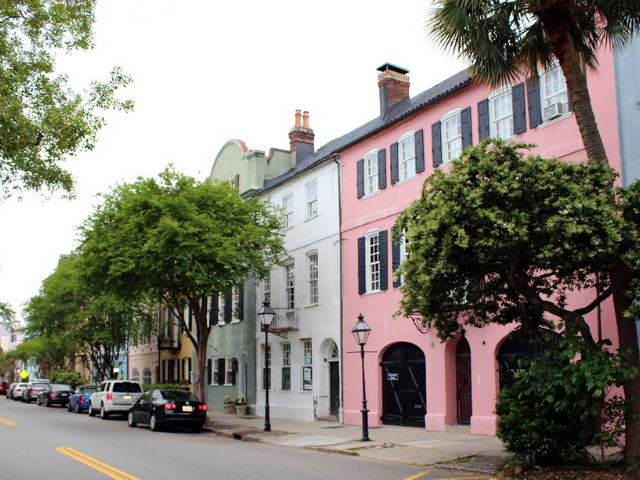
Charleston - South of Broad: Rainbow Row (1 May 2013). Flickr user Wally Gobetz. Retrieved 15:06 May 26, 2021.
Charleston County and the city of Charleston, its county seat, are the most historic locations in the state. English settlers arrived in the colony of Carolina in 1670 and established a town at Albemarle Point on the west bank of the Ashley River. The settlement, named Charles Town in honor of King Charles II of England, was subsequently moved a few miles away to a peninsula between the Ashley and Cooper rivers. Charles Town (renamed Charleston in 1783) was the political, social, and economic center of South Carolina throughout the colonial and antebellum periods, and it served as the state capital until 1790. Charleston District was formed in 1769, but portions were later split off to form Colleton (1800) and Berkeley (1882) counties. Present-day Charleston County includes the old parishes of St. Philip, St. Michael, Christ Church, St. Andrew, St. John Colleton, and part of St. James Santee. English and French Huguenot settlers and their African slaves built indigo, rice, and cotton plantations along the area's rivers and on its sea islands, while merchants of many nationalities made Charleston one of the busiest ports on the Atlantic. During the Revolutionary War, the American forces defeated the attacking British fleet at Charleston in June 1776; a palmetto log fort (later named Fort Moultrie) on Sullivans Island withstood the British cannonballs, and the palmetto tree was subsequently given a prominent place on the South Carolina flag. At another Charleston fort, Fort Sumter, federal troops were fired on by Confederate forces in April 1861, signaling the start of the Civil War. Charleston County has had many famous residents, including three signers of the United States Constitution: Charles Pinckney (1757-1824), Charles Cotesworth Pinckney (1746-1825), and John Rutledge (1739-1800).


